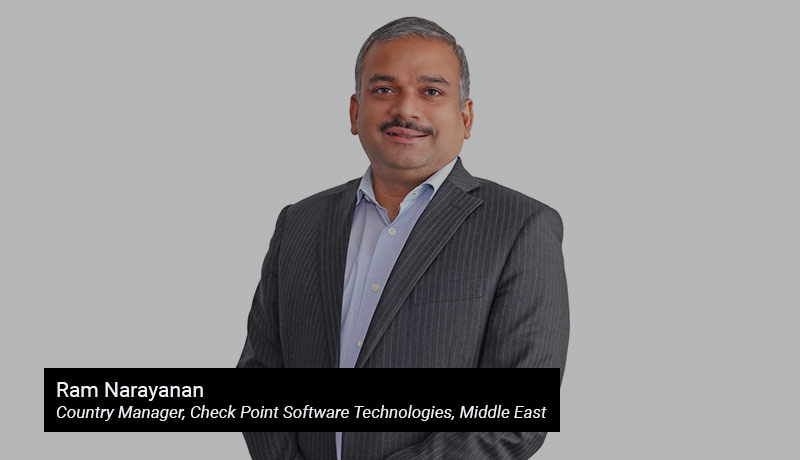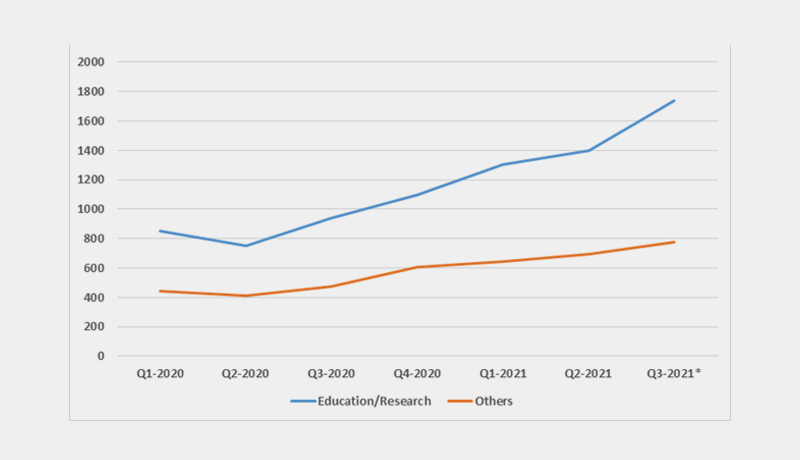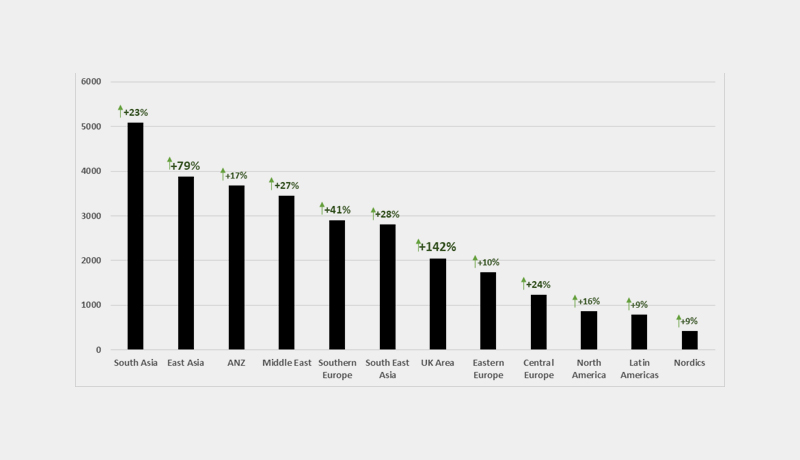
Check Point Research (CPR) reports that since mid-2020, we are seeing a steady increase in the weekly number of cyberattacks per organization globally, with the education/research sector being impacted at a higher rate than others.
In 2020, the COVID-19 pandemic forced organizations to pivot suddenly to a mostly remote workforce. Within a matter of weeks, organizations that had no existing telework programs needed to adapt and update their infrastructure so that their employees, partners, and users could work from home. It is now mid-2021, and the end of the pandemic is nowhere in sight, with organizations in many sectors having to deal with an increasingly active and complex threat landscape.
In particular, organizations in the education and research sector are finding themselves engaged in a cyber security battle like never before. This includes schools, universities, and research facilities. Most recently, the Department of Education in Australia’s New South Wales reported that it experienced a cyberattack which resulted in many of their online platforms shutting down, just days before remote learning was to commence in the new school term.
Ram Narayanan, Country Manager, Check Point Software Technologies, Middle East said:
“The pandemic reshaped the online and remote learning models and expedited several years’ worth of IT changes into just a few weeks. When institutions across the globe were plunged into rapid remote learning, students adapted quickly to this model and so did universities and schools. It is also worth mentioning that educational institutions that weren’t digitally ahead did find it challenging to adapt and prepare for the new normal. As organizations scrambled to restructure their network and security environments overnight, the move to the cloud and digital transformation efforts were accelerated. This rapid move resulted in security gaps and new opportunities for cyber criminals. Institutions now look to close security gaps and secure their networks – from students and teachers PCs and mobiles to the enterprise data centers and the cloud, with a holistic, end-to-end security architecture. Organizations in the education sector should be proactive in their protection strategies. It’s important to constantly change and strengthen the passwords and use technologies that prevent cyber-attacks, such as ransomware. Check Point Software is helping customers from different sectors in the region with solutions to close and eliminate these security gaps and build a scalable platform”.
In fact, in July 2021, education/research was the sector that experienced the highest volume of attacks, with an average of 1,739 attacks per organization weekly. This was a 29% increase from the first half of 2021 globally. The only sector which made a higher change from the first half of 2021 was Leisure, at 51%, as one might expect during the summer months.

By region, organizations in the education/research sector in South Asia currently experience the highest volume of attacks, as seen in Figure 2, with an average of 5,084 attacks weekly per organization. This is a 23% increase compared to the first half of the year. This is followed by East Asia with 3,873 attacks (79% increase), ANZ with 3,684 attacks (17% increase) and Middle East with 3,444 attacks (27% increase).

Today more than ever, endpoint security plays a critical role in enabling your remote workforce. Harmony Endpoint provides comprehensive endpoint protection at the highest security level, crucial to avoid security breaches and data compromise.
